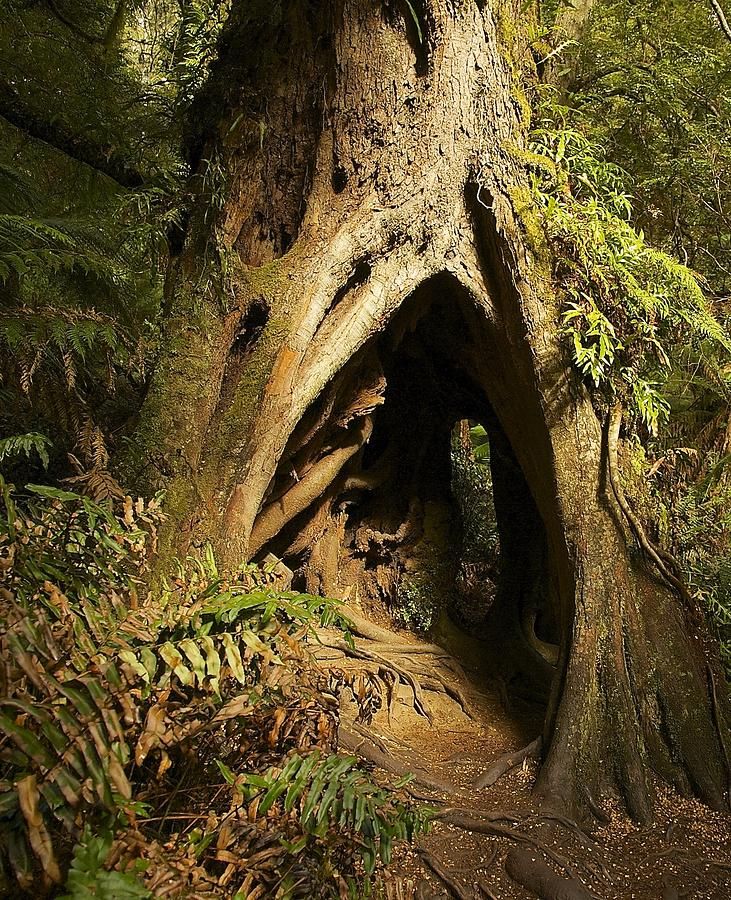
Is my hollow tree dangerous?
A hollow tree by itself isn’t an indication of weakness. Decay is the natural life cycle of many trees. Ancient trees have stood for hundreds, sometimes thousands, of years full of hollow cavities, and most are strong and sturdy if there are no other problems or diseases affecting the tree. It is usually younger trees that carry greater risk as they can’t withstand significant decay. As a result, they become weakened. Healthy trees will continue to form what is like a “cylinder” of sapwood that maintains structural support to the trunk and canopy depending on the ratio to the interior “dead” wood.
Of course, there are times when largely hollow trees are a risk. They may become unstable during the final stages of disease and in turn, become susceptible to wind and storms. It’s always a good idea to consult with an arborist if you have a hollowed tree in question.

Should I fill the hole/hollow with something to prevent further decay?
The answer to this is no. Filling a hole means trapping moisture in and usually promoting rot. Also, there are likely other things in there that need to get out like insects and possibly even animals. Sometimes covering a hole may be acceptable to theoretically allow a cavity to dry out while keeping moisture from entering. Though while that may seem logical, I’m not sure there’s enough research out there to suggest that this is at all effective. Healthy trees have a pretty good system of walling off or “compartmentalizing” on their own to keep decay from spreading to other areas of the tree. My usual advice is to just leave it be. Personally, I like seeing little doors over small hollows for “gnome homes.”
So, if you have a hollowed tree that is otherwise healthy, it’s probably fine. However, as is always the case, if you aren’t sure, or perhaps it has a foreboding lean in your direction, get advice from a certified arborist on what best to do (or not do).



